SAP UoM Configuration FAQs
Answers to common questions regarding configuring UoM and Dimension settings
Can I change a UoM key to business user requirements w/o changing the technical UoM key (and dimension assignment)?
Yes.
In principle, this is possible. A UoM is defined with an internal key (T006-MSEHI), a technical key and a commercial key. The commercial key (as the internal and the technical key) has to be unique in your clients, but can differ from the technical or internal key.
Example:
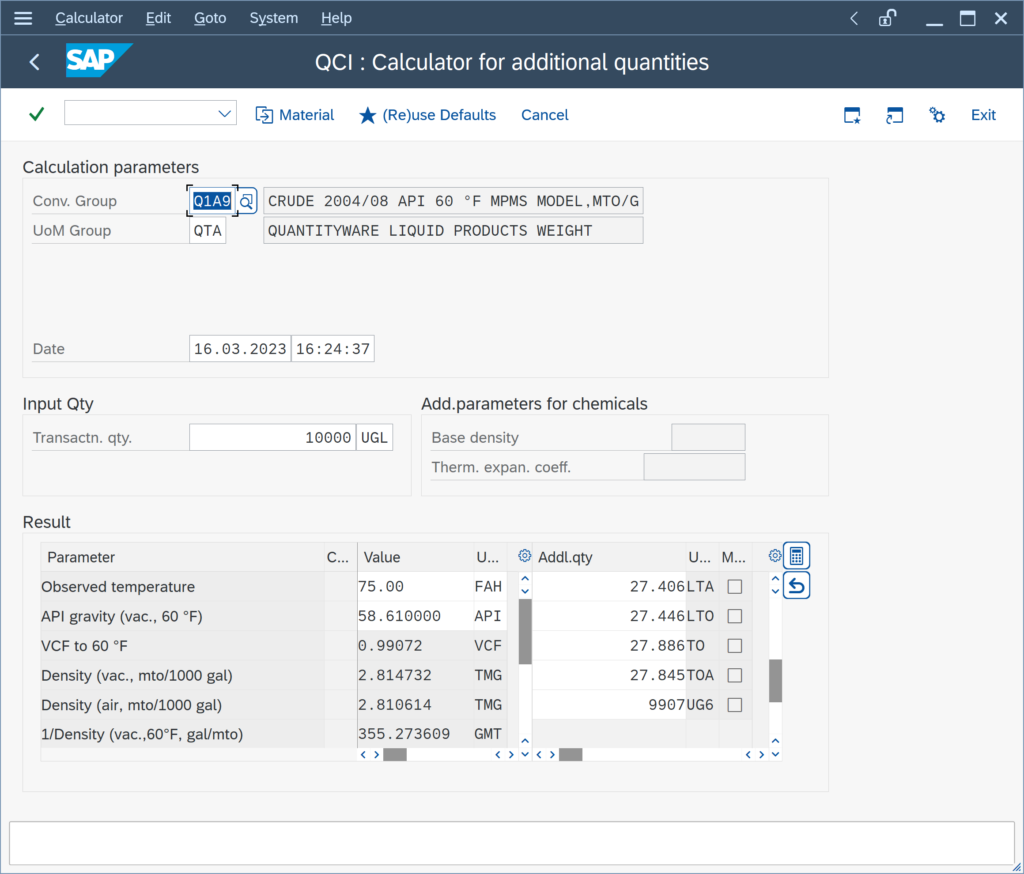
Business users require UoM LTA (Long ton, in air) and TOA (ton, in air) to be displayed as LNT and MT.
Go to UoM customizing transaction CUNI and select the appropriate dimension ID (Here: WGHTA,
Where do I set the decimal places for a UoM?
For each UoM, you define the number of decimal places (for display). Data input and display of result parameters via the SAP UI (e.g. QCI sub screen) is restricted to that number of decimals.
Note: For real rounding of calculation results, you define additional real rounding settings.
Example:
You wish to define the maximum number of decimals to be 6 for UoM ton per cubic meter – t/m³:
This setting is made via SAP transaction CUNI. Select the dimension ID (DIMID) for that UoM –
How do I define a new SAP dimension?
Quantities in SAP are defined as dimensions. These are maintained in SAP transaction CUNI: Dimensions ->
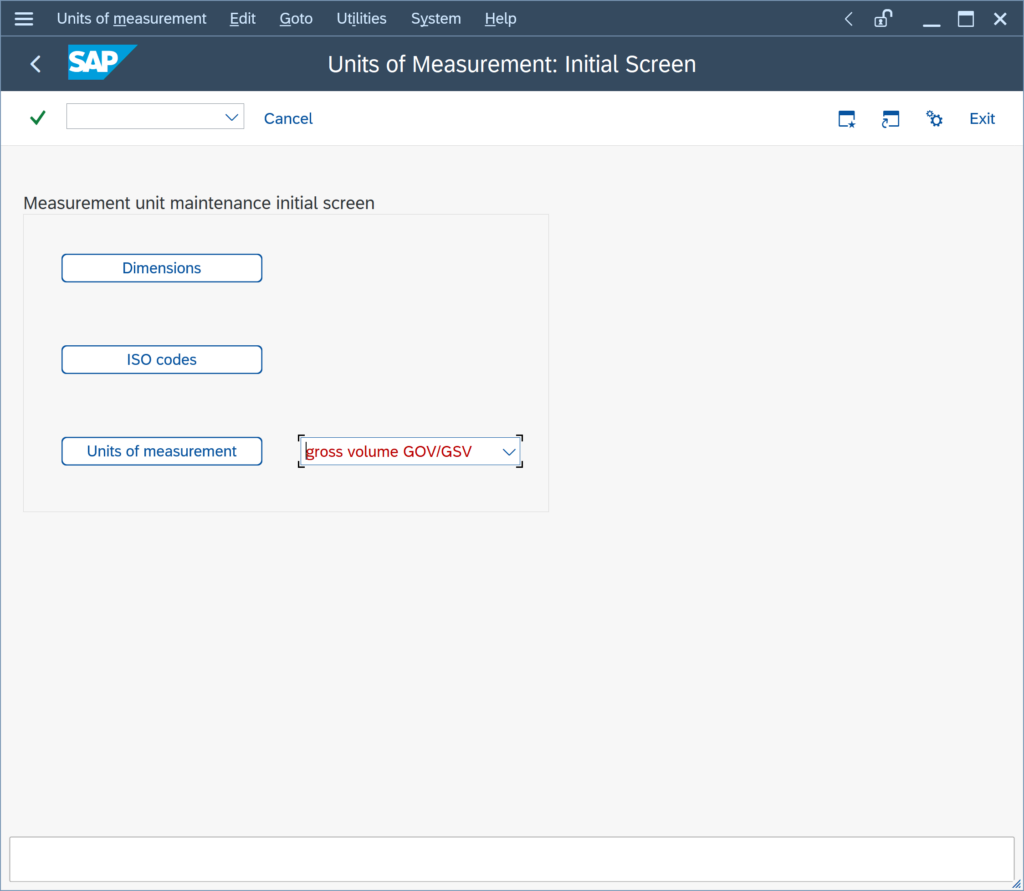
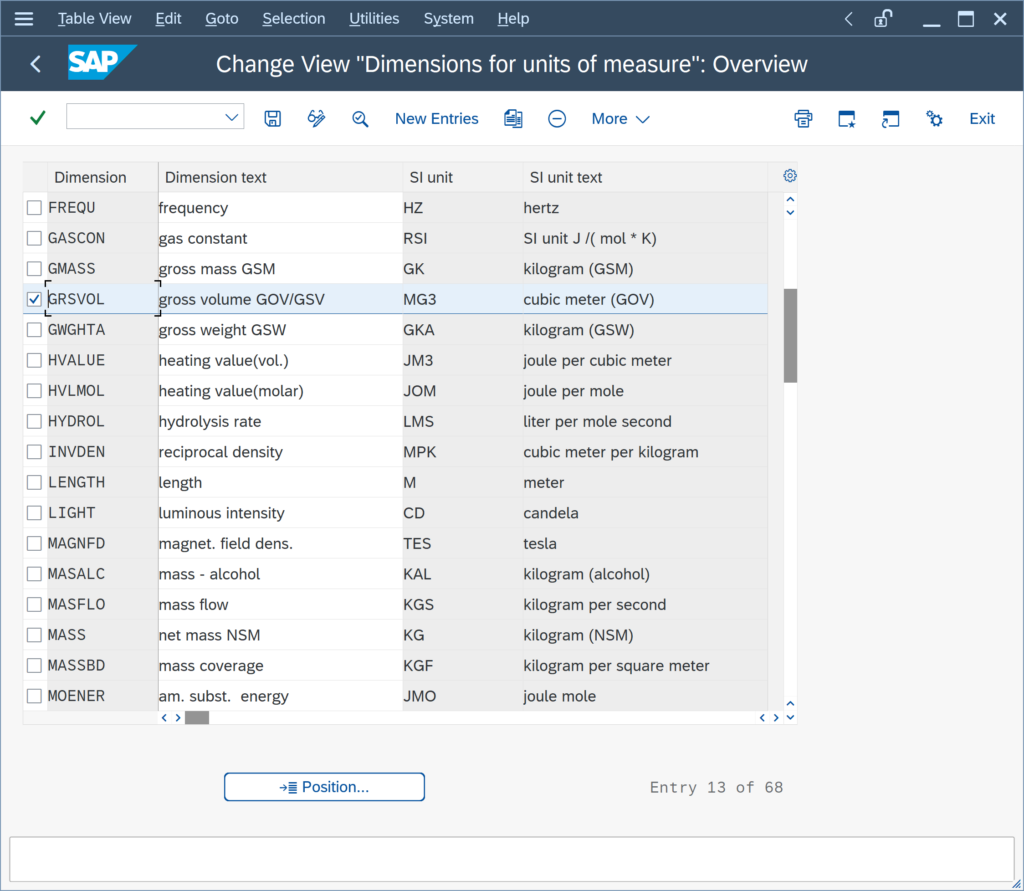
Units of Measure (UoM) are then defined per dimension. With the QuantityWare BCS template, more than 60 dimensions are delivered. Thus, it should not be necessary to define a new dimension.
If you cannot find the UoM with the appropriate dimension in the configuration template client 045, you should contact QuantityWare Support to discuss this requirement.
Reason:
New dimension definitions may require a specific configuration and global function module enhancement,
I require a new UoM which is not defined in the QuantityWare template. What can I do?
The creation of a new Unit of Measure (UoM) is done via SAP transaction CUNI. The most important step is to identify the correct dimension (DIMID) to which the new UoM shall belong.
Example:
Unit of measure(UoM) L/mm (Liter per mm) is required in my project. How can I define this UoM?
UoM without temperature and pressure specifications
1. Go to transaction CUNI, select the appropriate dimension – here volume per height – You may create new UoM for any existing dimension – however, you must ensure that the new UoM key does not already exist in any other system/client where the new UoM is required!
I require UoM gigawatt hours for my natural gas reporting, how do I define it?
Gigawatt hour is an energy UoM. As part of the QuantityWare configuration template (BC sets), 35 energy UoM are delivered:
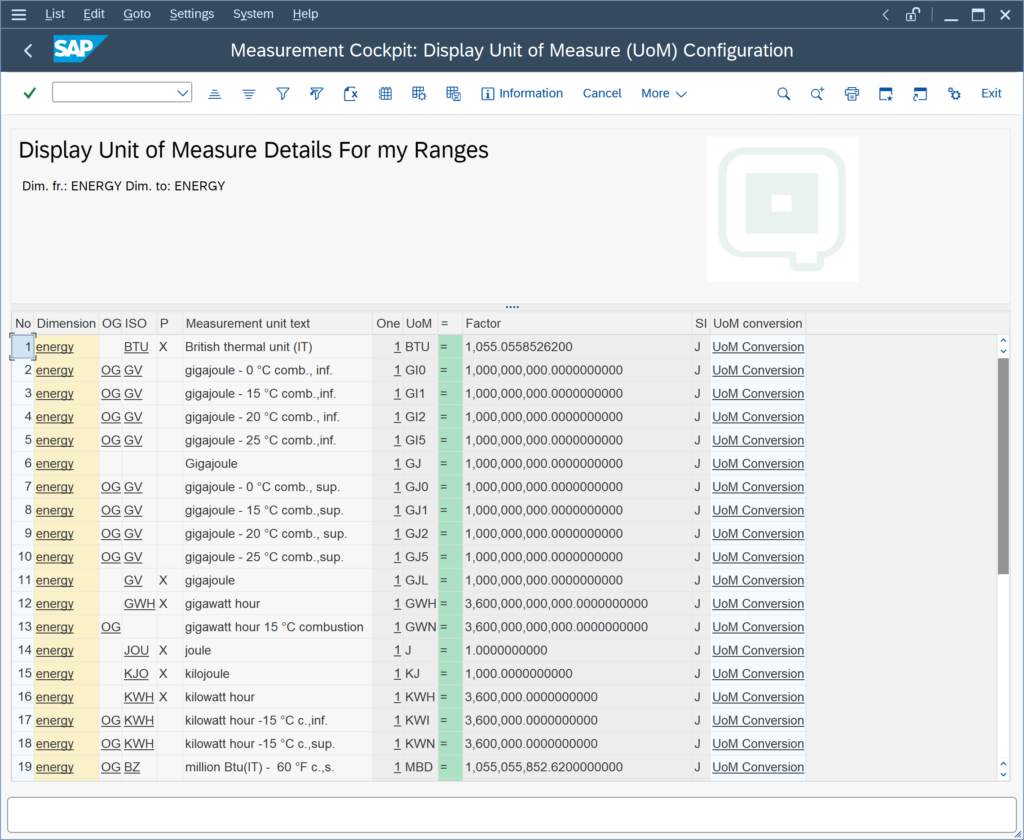
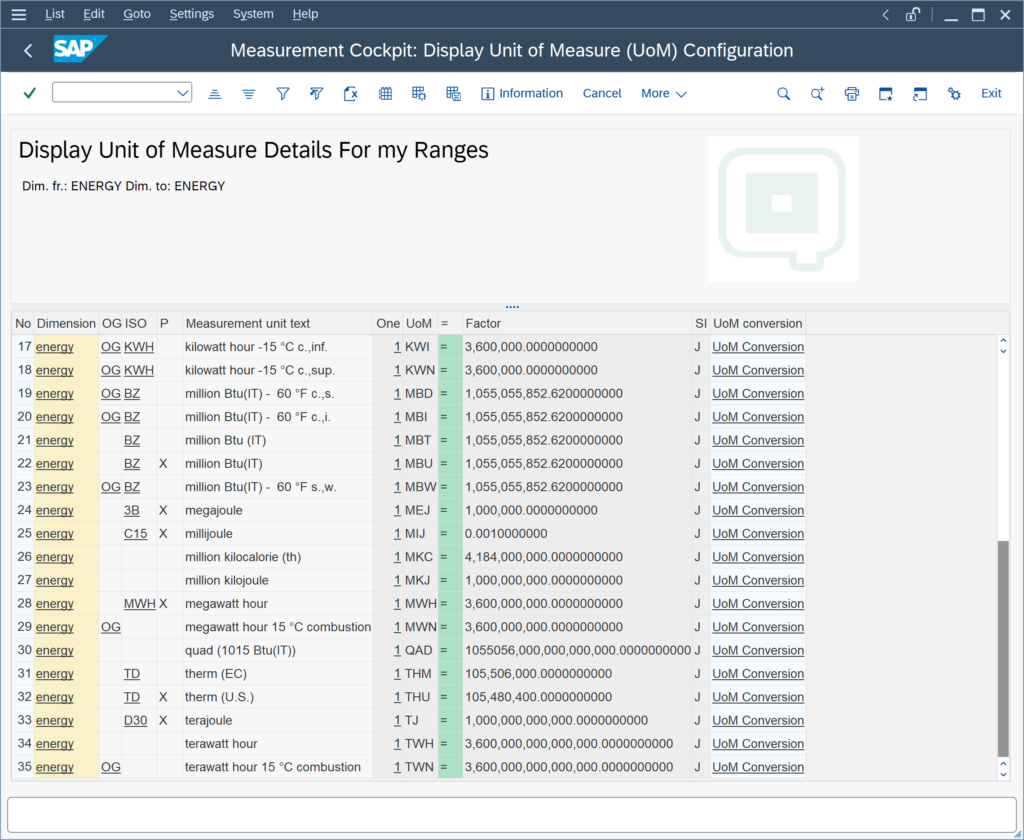
Gigawatt hour and terawatt hour are defined in the current BCP and BCG template.
Creating a new energy UoM
If you have not installed BCS 30A CSP03 / BCS 30B CSP02 , a new energy UoM can be added easily to the template and then distributed through your system landscape. Copy e.g. UoM MWH (megawatt hour):
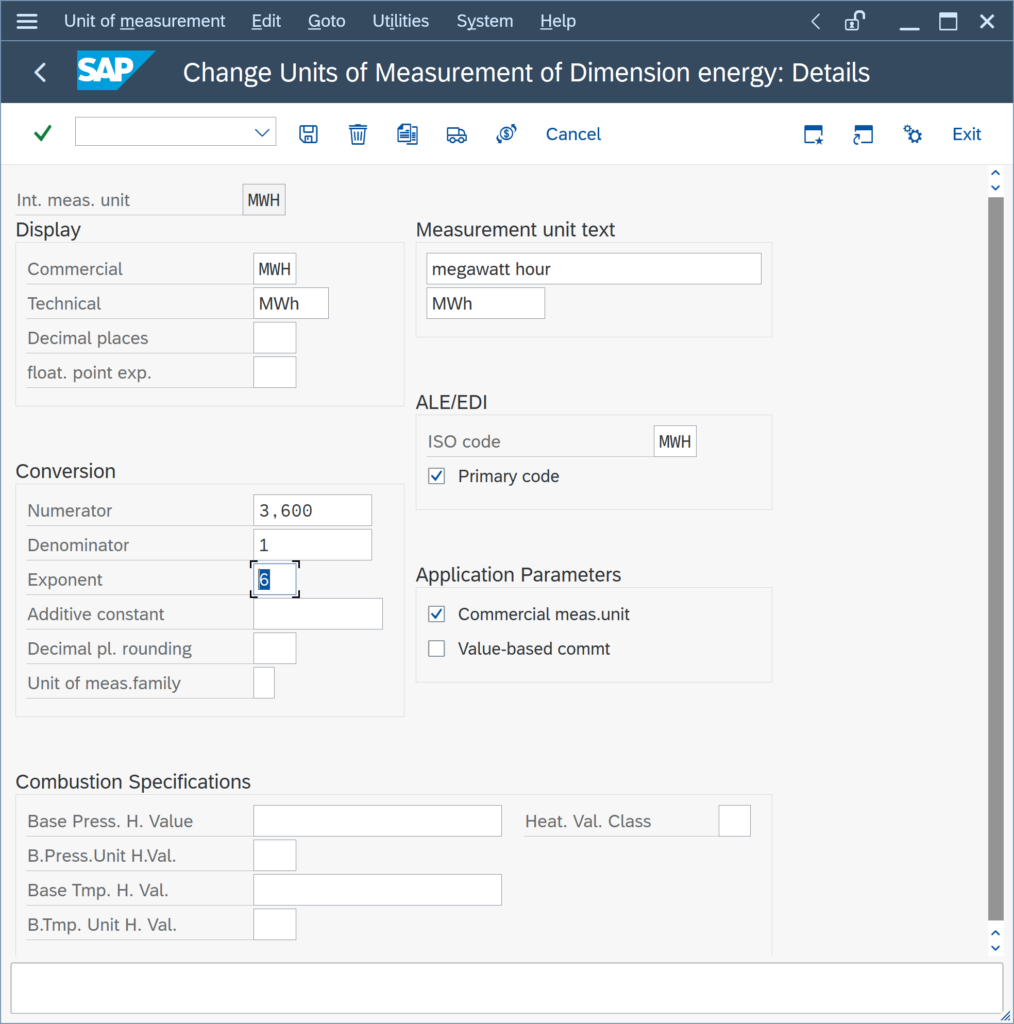
to GWH and TWH,
I receive error O3 212 "Tables T006 and T006_OIB do not match" when I access transaction CUNI - Units of Measurement. What can I do?
This error is raised if – e.g. during new client creation – the SAP T006* Tables are not populated consistently.
Solution:
Run SAP report ROIBXUOM_R3E.
- either via SAP transaction SE38
- or via the Petroleum Measurement Cockpit (PMC) -> Units of Measurement -> Consistency:
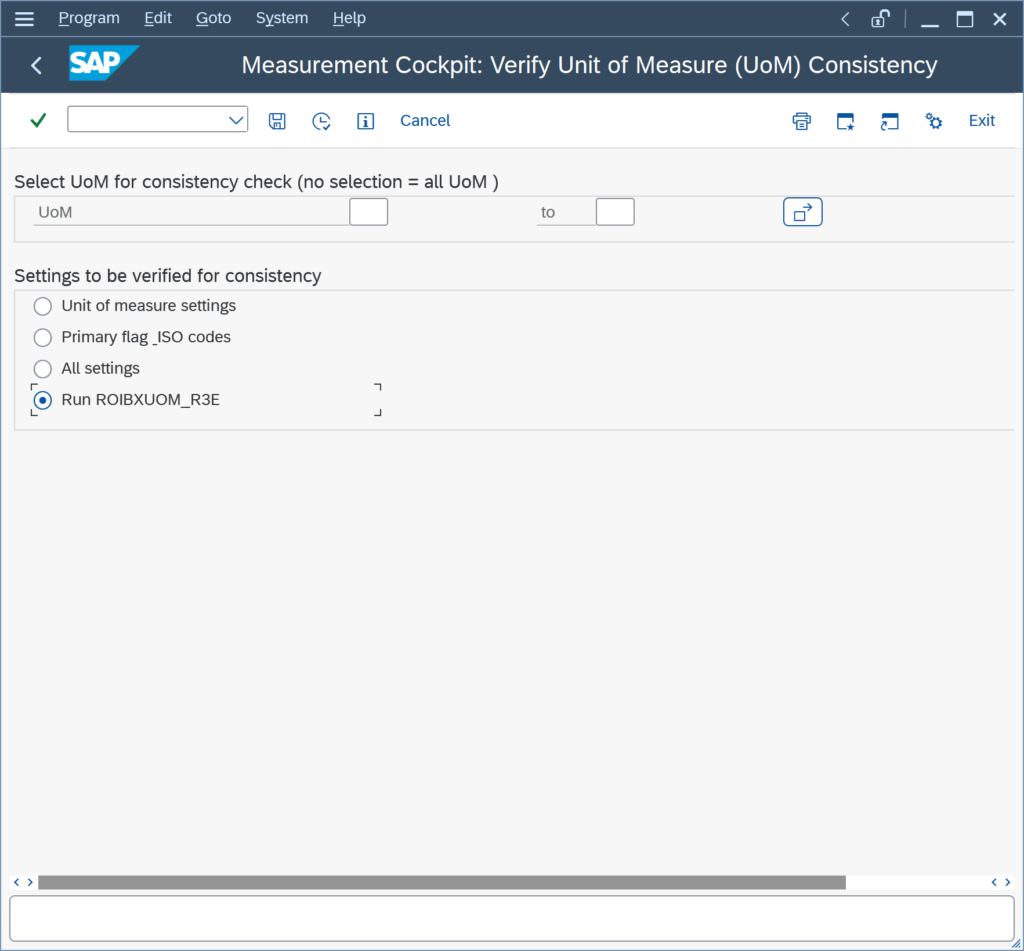
Execute the tool with option “Run ROIBXUOM_R3E” in client 045 (or any other client). You require the authority to perform cross client customizing changes.
I have set my quantity value UoM L15 and KG to be rounded to zero decimals, but it is not working. What can I do?
The UoM real rounding settings are considered for all MQCI template conversion groups. Rounding function
/QTYW/MQCI_ROUND_ALT_QUANTITYis assigned to all such conversion groups. To define the real rounding for a UoM, go to the PMC or GMC and navigate to: ( More -> ) Goto -> UoM Rounding:
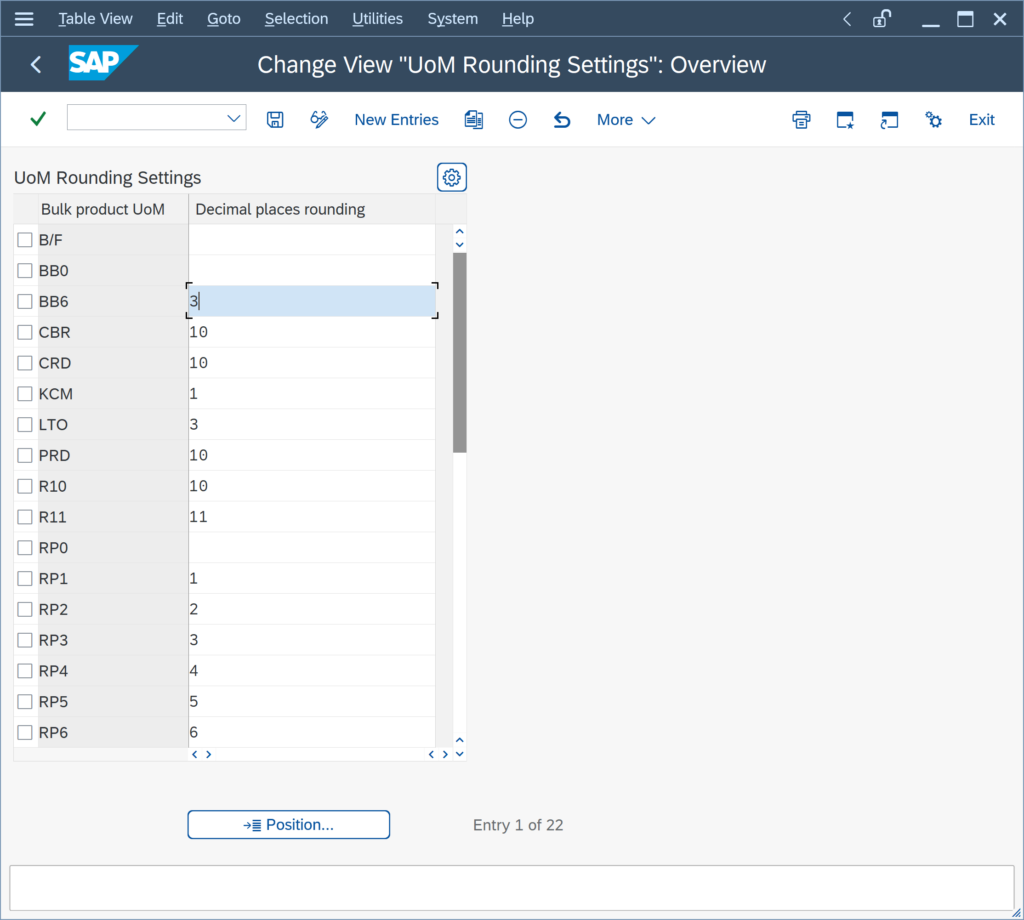
Maintain the number of decimals for each UoM that shall be rounded.
NOTE:
Via transaction CUNI, you define the number of display decimals for your UoM only –



